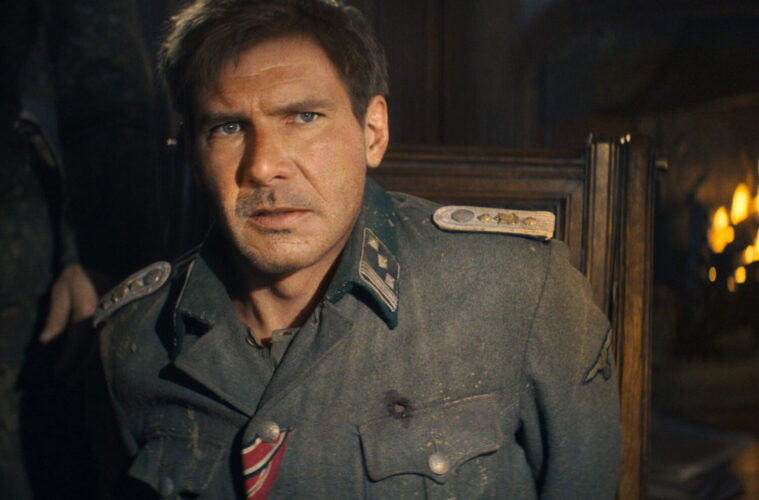 Indiana Jones used to be afraid of one thing: snakes. The archeologist could outrun boulders, crawl through tunnels and hop on moving planes, but put him next to one of those slithering creatures and he turns into a school girl with a bug on her desk. Harrison Ford was the definition of fearless in Steven Speilberg’s Raiders of the Lost Ark, but his character has grown scared of a number of things in recent years, like risk, vivacity and originality. The sequels haven’t exactly broken new ground, delivering the same combination of laughs and thrills audiences have come to expect from this franchise. And Indiana Jones and the Dial of Destiny offers more of the same.
Indiana Jones used to be afraid of one thing: snakes. The archeologist could outrun boulders, crawl through tunnels and hop on moving planes, but put him next to one of those slithering creatures and he turns into a school girl with a bug on her desk. Harrison Ford was the definition of fearless in Steven Speilberg’s Raiders of the Lost Ark, but his character has grown scared of a number of things in recent years, like risk, vivacity and originality. The sequels haven’t exactly broken new ground, delivering the same combination of laughs and thrills audiences have come to expect from this franchise. And Indiana Jones and the Dial of Destiny offers more of the same.
As always, the action sequences–which include the inevitable running through jungles and flying across deserts–are solid. But the title Dial of Destiny, might as well refer to the series itself turning back the clock: a digital de-aging technique allows the filmmakers to bring back the original Indy for the first part of the film.
The blast from the past in the movie’s opening sequence sees a de-aged hero trying to save his pal (Toby Jones) from a hoard of Nazis. He hops on a train to take on the soldiers, and for a second, you could swear you were watching a 35-year-old Ford. His wrinkles are gone, his shoulders are long and his punches are strong. Unfortunately, the sense of magic is lost when you trade-in practical effects for CGI. When nothing on screen is real, there isn’t much for audiences to latch onto.
Luckily most of the film is about old man Indy, now on the verge of retirement after decades of teaching college students. When his goddaughter (Phoebe Waller-Bridge) shows up to class, she drags him along for one last run at the Antikyretha, which is part of a time travel contraption built by a Greek philosopher. This of course gets the attention of Juergen Voller (Mads Mikkelson), a former Nazi who wants to use the device to change history and help Germany win the war. It’s not long before everyone is on the run from Sicily to New York, where the plot turns into a greatest hits parade of scintillating callbacks that include temples, bugs, artifacts, motorcycles, jaguars, John Williams’ score and Steven Spielberg’s set-pieces.
The finale is packed to the brim with spectacle, but there might be a few too many foreign rendezvous. This series has always put frenzy first, and most of the storylines tend to get lost in a sandstorm of implausibility. It’s thrilling stuff, filled with whips and traps and chase sequences that would feel at home in a Bond film.
Dial of Destiny doesn’t skimp on adventure, but when it comes to our suspension of disbelief, some of it goes a little too far. Are we really supposed to buy Indy riding a horse through a New York City subway with a motorcycle on his tail? Without running into a homeless person? It might be more believable if he didn’t just kill a bunch of Nazis on a train.
All of this is expected from a blockbuster coda, including the third act that tries to squeeze a few tears out of fans. This section–where Indy is reunited with someone from his past–is awash with a warm haze of nostalgia. The big stuff remains and the production design is outlandish, but director James Mangold allows for moments of quiet closure, too.
In the end, Ford gives one of his most committed performances in the entire series, capturing the charisma of his youth with doses of (older) leading man charm, especially when he’s given time to think, show the miles on his face and the light withering in his eyes. Though the franchise lacks fresh spark for his farewell to the role, at least his goodbye to the character has some bright moments.
Editor’s note: The disclaimer below refers to advertising posts and does not apply to this or any other editorial stories. LA Weekly editorial does not and will not sell content.
Advertising disclosure: We may receive compensation for some of the links in our stories. Thank you for supporting LA Weekly and our advertisers.

